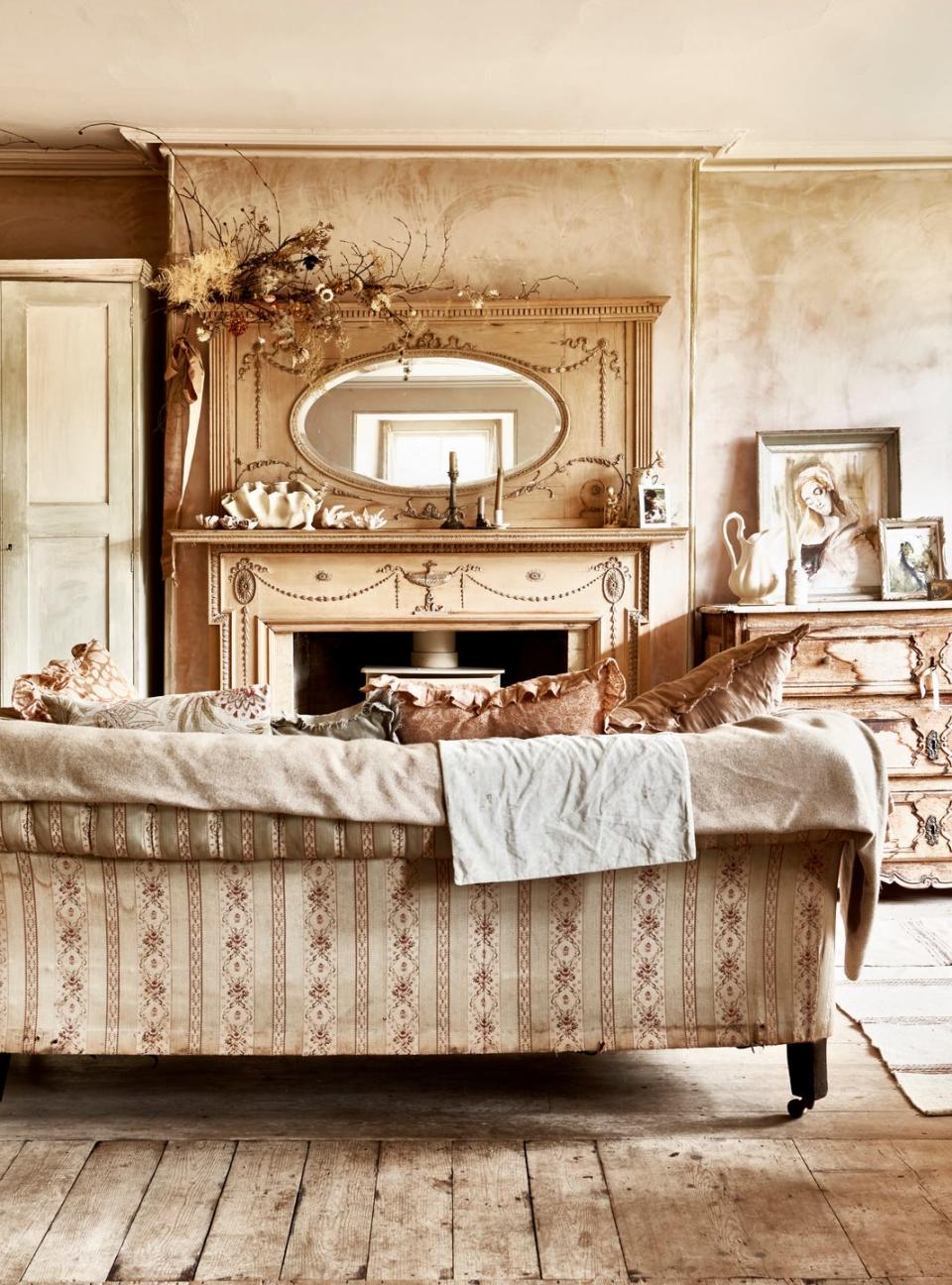5 essential tips for sourcing vintage fabrics

With a bit of planning, creativity and a trusted upholsterer, vintage fabric can be used in a myriad of ways.
You can replace tired kitchen cabinets with a curtain fashioned from some resilient ticking, a length of fabric weighted at the bottom makes for a totally fool-proof wall hanging, or you can give new life to plain cushions with something fabulous and patterned.
But where do you begin and what should you buy?
When we visited the Cotswolds home of photographer Ali Allen (have a look at the tour here – it's magnificent), who uses vintage fabric across every inch of her home, we were struck with her ingenuity.
Beds, sofas and chairs were draped in layers and layers of linens, old ribbons were tied around cupboard handles, fabric hung where you expect it (from curtain poles) and where you didn't (from wardrobes).

"I have a passion for textiles, and I’ve used vintage fabrics all around the house," says Ali. "It’s in my ancestry, as my grandfather founded the mills at Saltaire in Yorkshire."
While we took a look around her home, she shared with us her 5 top tips for sourcing vintage fabric...
1. Keep your eyes peeled
Unless you need a unique piece from a specialist dealer, don’t forget that you can often find useful lengths of vintage fabric at markets, vintage fairs, online and even charity shops.
"I like Portobello Market, while Etsy gives you world-wide access," says Ali.
Many Etsy and eBay sellers specialise in vintage textiles, and it's easier to find rare and designer fabrics online than in stores.
2. Check for damage
Unfold each piece carefully so you can check for moth holes (wool and silk are most prone to this), mould spots, rips, splits or marks along fold lines, sun damage and stains.
Dry rot is a common issue with vintage fabric, particularly cotton or linen. If it feels brittle to the touch or tears easily, it could be affected. Also, remember that fabrics can retain musty or smoky odours that might be tough to remove.
3. Embrace the individual
Look out for pieces with characterful features such as unexpected seams (due to narrow looms), monograms or interesting selvedges, and fabrics that carry labour intensive weaving techniques like brocade or damask that are a rarity today.
Hand or screen-printed patterns can carry subtle imperfections and older mineral or plant-based dyes may have faded in uneven patches. It all adds to the charm.

4. Be adaptable
You won’t always find exactly what you want. Vintage fabrics were often produced in narrower widths than modern fabrics, which can affect their potential for reuse.
You can cut large pieces down when necessary, while small pieces can be patchworked together. "But always buy what you love and gives you joy," says Ali.
5. Wash before using
Linen is prone to shrinking while some vintage fabrics may not be colourfast, so it’s a good idea to wash them gently before you begin your project. Use a 30-degree cycle (or hand wash if delicate) and non-biological detergent. "Bicarbonate of soda is a great natural cleaner," adds Ali.
You Might Also Like


